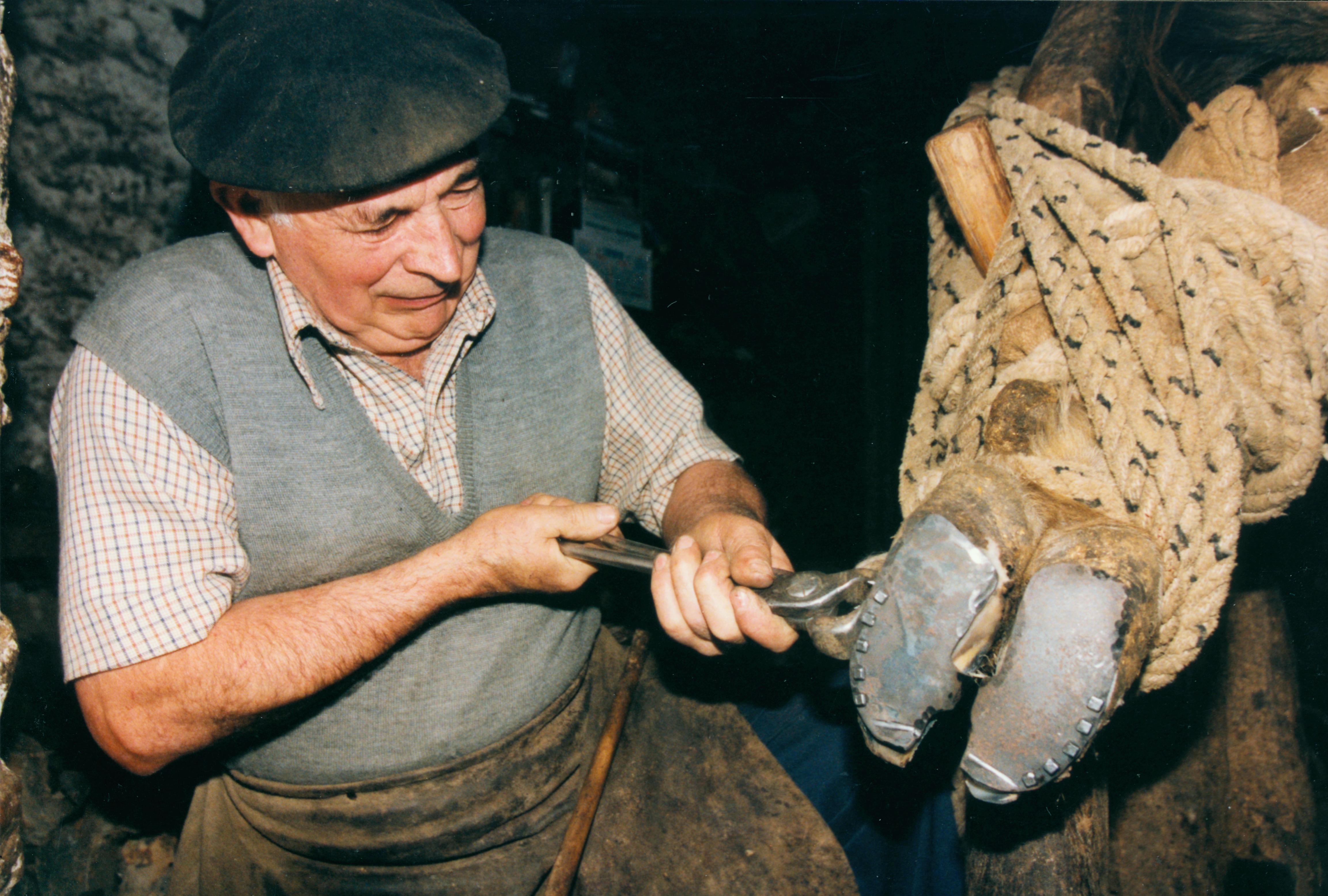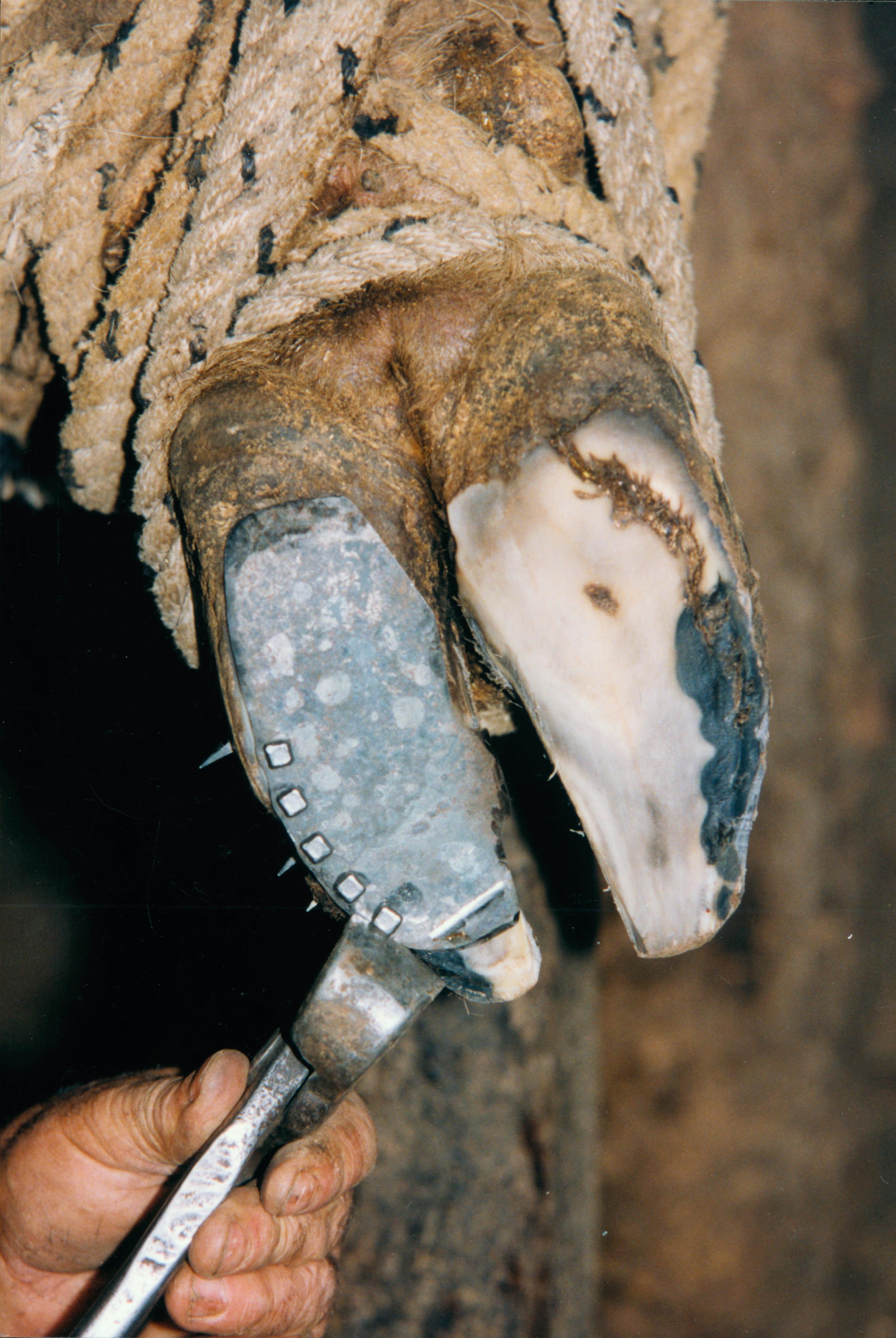Basque ethnography at a glance

Juan Oleaga, the blacksmith. Maruri-Jatabe (Bizkaia), 1999. Mikel Martínez. Labayru Fundazioa Photographic Archive.
My first knowledge of the art and trade of the blacksmith (errementaria, in Basque) came in childhood. I was no more than nine or ten years of age when, on a Saturday morning, my mother tasked me with a most peculiar errand: I was to help a neighbour walk a cow to the blacksmith’s in Maruri-Jatabe, a nearby locality some nine kilometres from Urduliz (Bizkaia), my native village. I was asked to follow from behind with a stick in my hands and herd the animal should it stop moving or not keep up pace, an apparently straightforward task. But what started out as an excursion —I was rewarded with a small package of assorted biscuits for the road, much to my delight— became a never-ending and exhausting day.
The walk to Zubiaurre Farmhouse had seemed to last forever. At the blacksmith’s (perratokia) several other heads of livestock, most of them oxen, waited for Juan Oleaga to trim their hooves and put ‘new shoes’ (perrak) on them, and our turn did not come for ages. The workshop was a superb space for meeting and socializing where folks chatted lively with each other about day-to-day issues while waiting: local gossip, the farm animals, the harvest, the weather… After the cow was shod, the conversation went on for yet a few more hours at the bar, and for that nine-year-old girl it was an endless day.
Never would I have thought I would return to that same place to interview Juan many years later, in 1999, when I was already working at Labayru in the drafting of the Ethnographic Atlas of the Basque Country. His workshop and the atmosphere within brought back memories of years ago.

Fitting of the shoe on the hoof. Maruri-Jatabe (Bizkaia), 1999. Mikel Martínez. Labayru Fundazioa Photographic Archive.
After hours of interview and observation I was able to gather the whole process of shoeing, which I shall briefly describe. The first step is to introduce and secure the animal in the shoeing stock (auntegia) by means of heavy leather belts. The ox or cow is raised slightly for its front legs to hang in place, and the rear feet are immobilized to avoid kicks while the blacksmith does his job. The foot to be shod is tied to a wooden hoof-rest so it is exposed in the required position.
The actual shoeing begins once the animal is safely restrained. The shoer first removes the old nails and shoe, cleans the hoof with sackcloth and trims the outer hoof wall to the desired length with nippers. The sole and the central groove of the hoof are worn down with a knife and filed with a rasp. Next the shoe is tried, measured to the foot and shaped on the anvil or cut with the hand saw if needed. The shoe is usually tried on repeatedly, looking for a perfect fit before it is finally applied.
The smith then affixes the shoe on by driving 4, 5 or 6 nails, depending on the size of the hoof, into the hoof wall. As they are hammered in, the nails emerge on the sides of the hoof, and their ends are bent and cut off using the clenching tongs. Finally, any sharp edges are filed and the shod hoof brushed with burnt oil. The process is repeated for each hoof.
Nearly twenty years later, in 2017, destiny and fate led me to meet another blacksmith, Josean Olea, for the recording of a video in Laukiz (Bizkaia). We were able to ascertain presently in the 21st century the shoeing process continues to be exactly the same as described above, the only difference being now Josean drives his truck from farm to farm equipped with a portable stock. Only horses and oxen used in stone-dragging competitions are shod today, but he can still make a living from his trade.
Akaitze Kamiruaga – Popular Cultural Heritage Department – Labayru Fundazioa
Translated by Jaione Bilbao – Ethnography Department – Labayru Fundazioa
Reference for further information: “Sobre el herrado de ganado [On the shoeing of livestock]” in Etniker Bizkaia. Bilbao, 1999.

